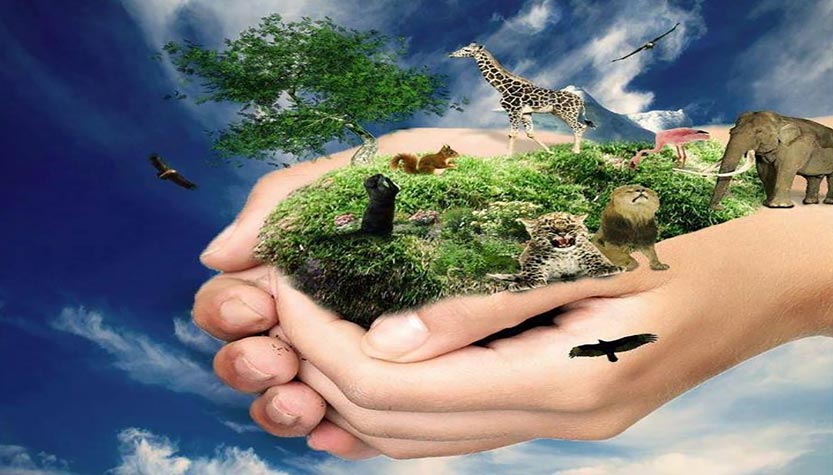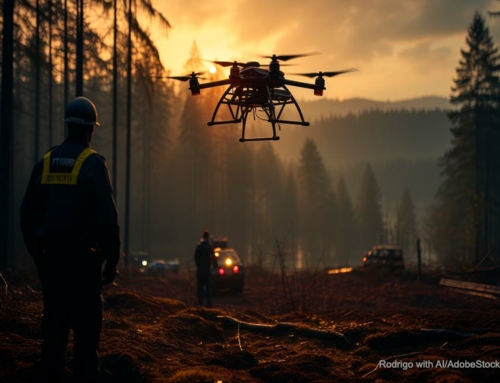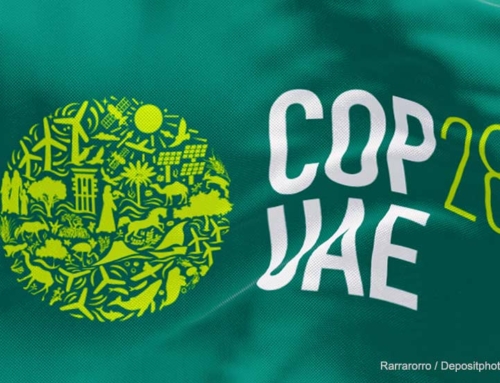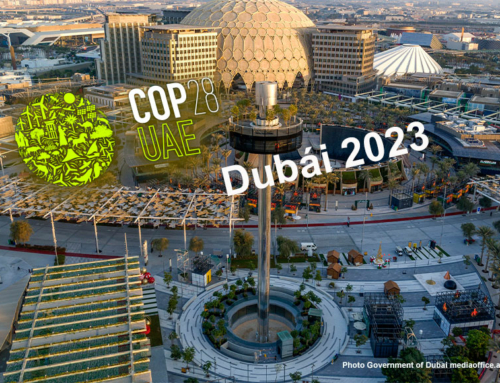Homo sapiens were the last to arrive at this beautiful paradise called Earth, our spherical blue and green house that floats and travels with its exuberant vital load in the dark cosmos. With our newly opened intelligence, skills, natural curiosity, and exclusive existential consciousness, we are amazed to see what was discovered before our eyes, after 60 thousand years of ice and frost. The glaciers began to melt twelve thousand years ago and the long white monotony gave way to new landscapes. The sun shone, the grasslands turned to green, the sound rivers flowed, the little birds sang, the butterflies waved, and from time to time they settled on multicolored flower carpets. Finally, the bears came out of their caves and life took on new forms, sounds and colors, in a setting that truly looked like a wonderful theme park, ideal for living and enjoying life. The long winter had come to an end, and the most formidable human adventure began in that emporium of resources that seemed infinite, but time would prove that they were not.
That handful of surviving men and women from the last stage of glaciation, the coldest, the true ice age, began to expand and admire the new world they falsely believed belonged to them. It is true that the Earth is our rotating home, and of our ancestors and descendants, but so is our non-human neighbors. With the speed of our science and technology we acquire knowledge with which we leave out of competition the other species with a brutal asymmetry. We were the last to arrive, we made it late (December 31, at 11:03 p.m. in geo year 13, according to the geo almanac we proposed) and in a few minutes, we took control of planet and turned it into a theme park that we considered as our exclusive property. The difference with the real parks is that they close at night and an multitude of cleaning and maintenance leaves them the same or better for the next day, which is not the case with Earth.
So, we have dominated airs, seas and lands, overcoming all our predators, from the largest to the microscopic, and occupied almost every corner of the planet. In our victorious dominion we have extinguished species, knocked down entire forests, thrown tons of CO2 into the atmosphere, and we are eating whales, dolphins and fish, depopulating rivers, lakes and seas. We have poisoned air, water and soil. We are ending at excessive speed with the resources that our mother Earth has so generously offered us. If we do not rectify it will be too late and Mother Earth will not come to our calls and everything will be lost for the human species and many other species.
Twelve thousand years after that bucolic stage human intervention of planet has been on a large scale. The Borneo rainforest has been slashed by 75%, largely during the last three decades of the last century. Consequently, there has been an unprecedented local climate change, which no one doubts its anthropogenic cause. Another example is the Amazon jungle where the destruction of forests has given way to urbanization, agriculture, livestock, timber, oil and mining, construction of roads, penetration roads, oil pipelines, hydroelectric dams, that some 30 million people live in the Amazon basin. All bills for utilities (gas, electricity etc.) the exuberant jungle. With this and other interventions we have modified our natural greenhouse effect, mainly through the emissions of gases of fossil origin, with which we are changing the climate and raising the temperature of the Earth to alarming levels.
Within this context we set out to analyze the “three themes” of our “park” and the “three ways” with which we deteriorate it, to have a better understanding of the damages. The themes: “the world of waters”, “the world of airs” and “the world of soils”. Ways to affect them: “injection”, “extraction” and “invasion”. So we have nine different ways of degrading our environment.
Injection
The air receives massive injections of gases and particles. We injected into the troposphere and into the stratosphere monoxide and carbon dioxide, sulfur dioxide and trioxide, nitric and nitrous oxides, nitrogen dioxide, methane and Freon gas. The particles correspond to powders, fumes, mists and aerosols. Industrial powders contain heavy metals such as iron, zinc and lead, which come from eroded soils containing mineral particles, animal wastes and dried vegetables. Fumes and mists are sets of gases that carry with them various particles.
In the soils, we make injections that can be toxic and dangerous. We introduce harmful substances into the lands of towns and cities, agricultural and livestock soils, mining camps, plains, mountains, forests, beaches, riverbanks, glaciers or deserts and even in our small gardens. There are few places on the planet that remain virgin, that is, with pollution-free surfaces. We inject fertilizers, pesticides, solid waste, heavy metals, radioactive contaminants. Acid rains inject toxic substances into the soil.
Throwing a can into the sea is an act of injection, just like a plastic bag. Injections into oceans, seas, lakes, ponds, rivers and ponds practically comprise all kinds of substances and materials. Wastewater from industrial landfills contains oils, phosphates, nitrates, fluorides, lead, arsenic, selenium, cadmium, manganese, mercury and even radioactive substances. Many cities pour large volumes of fecal matter, pathogenic microorganisms, detergents, insoluble gases, all types of rubbish, debris and glass, many of which are impossible to recycle. Another type of very lethal injections are massive oil spills.
Extraction
From the air, we extract birds, that is, we shoot down them with different purposes: edible species, exotic birds such as hunting trophies, predatory birds of agriculture, livestock breeding and farm animals, or kill them indirectly by collateral effects of air pollution or by the extinction or diminution of their prey or food or destruction of their habitat or breeding site.
Of the soils, we extract amount of resources for our food, protection and decoration. The felling of a tree in the Amazon is the extraction of a unit removed from our largest plant lung. The killings of elephants, rhinoceroses, wolves, coyotes, foxes, bears, to name a few examples, correspond to the category of extraction. Extractions made on species of one medium can have effects on the fauna of another. The decline in salmon decimates the bear population, causing imbalances in food chains.
The extraction of aquatic species by humans has acquired dramatic volumes. Many can no longer reproduce at the speed at which they are fished. Anchovies, mussels, salmon, tuna, carp, sardines, catfish, shrimp, cod, shrimp, prawns, lobsters, crabs, octopus, squid and many others plus. And let’s not forget the whales, who have become icons of our depredations and more recently also the dolphins.
Invasion
The invasion of airspace is accomplished by building tall constructions and skyscrapers in our mega cities, displacing winged species to other places. Likewise, with the building of elevated electric towers and antennas. We also invaded the airspace of birds with airplanes, rockets and missiles. However, the aerial invasion is not comparable to the one we do at the soils.
The most widespread method of invasion of soils is the displacement of plants and animals from their habitats by humans. We invaded lands by building towns and cities that once belonged to other species. We destroyed millions of miles of ecosystems to make way for huge mining and oil camps and agricultural fields that are lost in infinity to produce food for nearly eight billion humans. In the habitats that we ruin, the animals die or flee looking for new accommodations or are isolated in ecosystems with no future. Trees and other plants succumb to no avail.
The invasion of aquifers by landfills to expand urbanization and cities or to build ports, roads, airports and parks, is a common practice that affects biomes located in seas, oceans and lakes. We also affected the flora and fauna of the rivers that we diverted to feed dam needed to move large hydroelectric plants.
If we think that at the early twentieth century we were one billion inhabitants on Earth, we can appreciate the burden of this expansion for the ecosystems of the planet. This violent demographic increase, in which the population has multiplied by eight in little more period than a century, begins to be a huge problem for the planet and its inhabitants.
Our park has so far supported this expansion, but we do not know until when it can continue to do so. However, many humans still believe that the resources of our planet are infinite and act as if they were in an amusement park. They do not realize that we must protect our habitat from further damage in the future, give it maintenance and above all learn everything we can about our privileged bluish-green globe. As we said a few lines above: if we do not rectify it will be too late and Mother Earth will not come to our calls and everything will be lost for the human species and many other species.
Sandor Alejandro Gerendas-Kiss







Leave A Comment